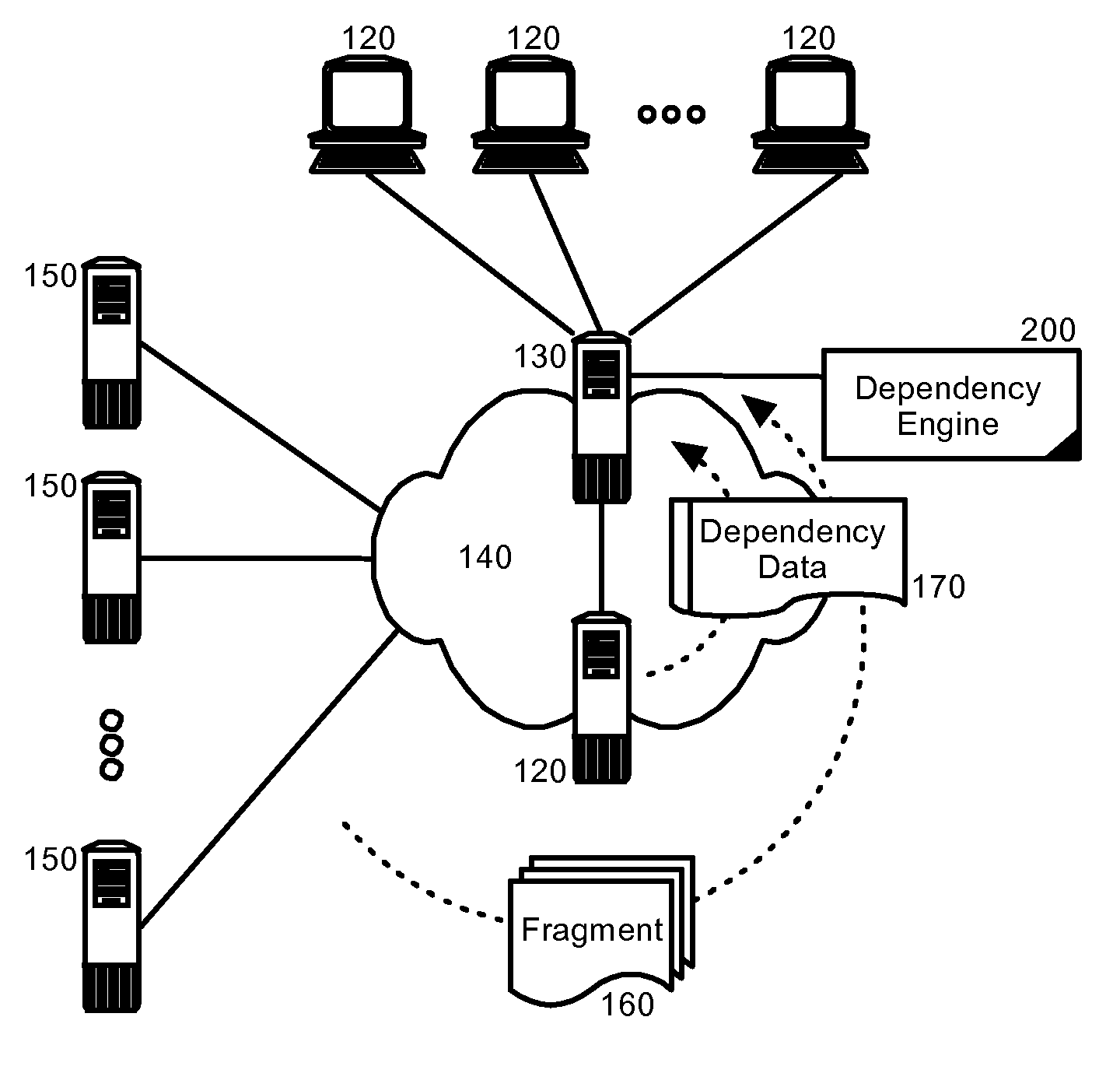Dispatching request fragments from a response aggregating surrogate
a request fragment and response technology, applied in the direction of web site content management, digital computers, instruments, etc., can solve the problems of large latencies, frequent-updated content and personalized or customized content cannot be readily cached, and the processing overhead of regenerating an entire page can be very high
- Summary
- Abstract
- Description
- Claims
- Application Information
AI Technical Summary
Benefits of technology
Problems solved by technology
Method used
Image
Examples
Embodiment Construction
[0019]Embodiments of the present invention provide a method, system and computer program product for dispatching request fragments from a response aggregating surrogate. In accordance with an embodiment of the present invention, dependency information for fragments in a dynamically assembled page can be determined and provided to a surrogate server in the edgified network. A dependency engine coupled to the surrogate server can use the dependency information to order the loading of each of the fragments, in parallel groups where appropriate in order both to assure the presence of dependencies for dependant fragments and also to enhance performance through parallel fragment loads where possible.
[0020]In further illustration, FIG. 1 is a schematic illustration of an edgified content distribution data processing system configured for dispatching request fragments from a response aggregating surrogate. The system can include an origin server 120 configured to serve requested content to ...
PUM
 Login to View More
Login to View More Abstract
Description
Claims
Application Information
 Login to View More
Login to View More - R&D
- Intellectual Property
- Life Sciences
- Materials
- Tech Scout
- Unparalleled Data Quality
- Higher Quality Content
- 60% Fewer Hallucinations
Browse by: Latest US Patents, China's latest patents, Technical Efficacy Thesaurus, Application Domain, Technology Topic, Popular Technical Reports.
© 2025 PatSnap. All rights reserved.Legal|Privacy policy|Modern Slavery Act Transparency Statement|Sitemap|About US| Contact US: help@patsnap.com


